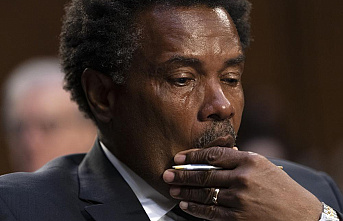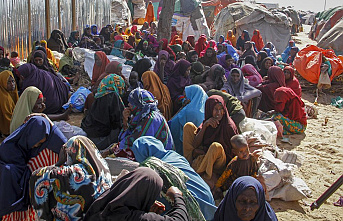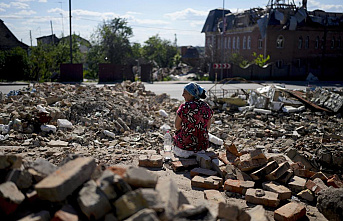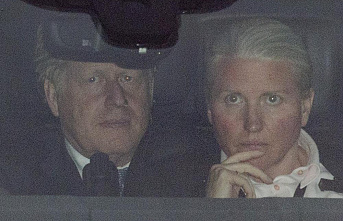In the spirit of the general public, Ethiopia remains associated with images of the dramatic famines of the mid-1980s, which had caused a great emotion and a broad mobilisation of the international charity organizations. The disastrous years are now far behind. If Ethiopia remains classified by the world Bank among the least developed countries (LDCS), with a per capita income of $ 2,300 per year (at the 174th largest in the world in 190), it symbolizes, however, the economic dynamism of Africa, as summed up in the slogan of the national airline Ethiopian Airlines " The new spirit of Africa ".
For fifteen years, the annual growth rate has never been below 7 %, and the per capita income has been multiplied by three. But this unquestionable success – and hailed by the international financial institutions – remains extremely fragile, and the next legislative election, originally expected this summer but postponed sine die due to the epidemic of coronavirus, is likely to exacerbate ethnic tensions and economic as already felt in the country. To paraphrase Andrei Amalrik, Ethiopia will survive in 2025 ?
Read also Ethiopia : the murder of a singer featured wake up ethnic tensions
Read also Ethiopia : the high stakes of the referendum of Sidamas to Abiy Ahmed
An institutional transition imperfect
If Ethiopia grows proudly his image as the first country in Africa to be converted to christianity (as early as the Fourth century) and oldest civilization of the continent, its borders are recent, since the southern lands (which mainly correspond to the present-day provinces of Oromya and Somali), were not conquered at the end of the Nineteenth century under the reign of Menelik II. The populations, in majority of the muslim faith, were reduced to serfdom. Their resentment was at the origin of the foundation of insurrectional movements, violently repressed under both emperor Haile Selassie (1941-1974) that during the military dictatorship, the sinister period of the "red Terror" under the rule of Mengistu Haile (1977-1991).
In may 1991, Mengistu was forced to leave power after several military setbacks suffered in the face of two guerrillas, separatists, the popular Front for the liberation of Tigray (FPLT) and the popular Front for the liberation of Eritrea (EPLF).
On 23 may 1991 the statue of Lenin is toppled in Addis Ababa after the fall of the government of Mengistu. © Jerome Delay/AFP
The FPLT, led by Meles Zenawi, took power in Addis Ababa. In the interests of national gathering, it extends to all the nations of the country to form the revolutionary democratic Front ethiopian people's (EPRDF). But in the midst of this electoral coalition, the FPLT remained the primus inter pares. After the death of Meles Zenawi (2012), the minority tigréenne (which represents 6 % of the population), very present in the security apparatus, has seen its role diminish, while the protest movements were gaining momentum against a regime increasingly authoritarian. The EPRDF has been able to maintain power thanks to massive fraud in various elections legislative (it holds all of the seats in the current Parliament).
Read also Ethiopia : Abiy Ahmed and the puzzles of constitutional
To the implosion ?
The next general election, the 6th, since the adoption of the new Constitution in 1994, is one the outcome of which remains uncertain. In November 2019, the current Prime minister, Abiy Ahmed, aware of the discredit of the EPRDF, decided to disband to form a new formation, the Party of prosperity, that is more representative of all the minorities in the country (involving eight training courses, election), and above all more democratic. But the popular Front for the liberation of Tigray, has refused to join this alliance, which is devoted to the erasure of the minority tigréenne on the political scene.
The regions of Ethiopia. © geocurrents.info
These elections are likely to rekindle the ethnic tensions latent. Of identity claims, the expression of which was under wraps for several decades re-emerge today. The population of Ethiopia is made up of nearly a hundred people, of which the main ones are the Oromo (about 40 %, muslim majority), the Amharas (27 %, christians) and the Tigréens (6 %, christians also). The Tigréens perceive themselves as the founders of Ethiopia, but they were marginalized from the Nineteenth century because of the annexation of a part of the Tigray region by Italy in 1889), and the influence exercised by the nobility amhara with the emperor Menelik II (1889-1913).
Abiy Ahmed is father of the oromo and of the mother amhara ; but being of the christian religion, he remains considered one of the elite of the north, which ruled the country since 1991, as he has previously been at the head of an agency of military intelligence. It has in front of him a formidable opponent in the person of the journalist, Jawar Mohammed, an oromo origin, who claims to channel the popular protests in presenting themselves as the first opponent of the regime in place.
Born in Ethiopia in 1986, Jawar Mohammed is installed in the United States after his studies to form the group news Oromia Media Network. It has never ceased for ten years to denounce the violations of civil liberties committed by the ethiopian government, and was one of the organizers of the protests that led to the resignation of Prime minister Haile Mariam Dessalegn (2012-2018). Its detractors denounce his speech, the seditious (because he threatened to support secession of the Oromiya) as its calls for violence by relying on a youth movement, the Qeerros.
In addition, the line of fracture traditional between populations amharas and tigréennes christian of the north and have been islamized in the south (living in the provinces of the Oromya, the Harar, and Somalia) has now been added a third cleavage, economic.
Read also Ethiopia : against communitarianism, long live the Party of prosperity !
divisions economic
If Ethiopia still ranks among the most corrupt countries in the world, and whose human development index is still very low (173rd in the world), it should nevertheless be noted visible progress achieved over the past 20 years.
Ethiopia is now the 5th largest producer of coffee, the 4th largest exporter of flowers, and develops an industrial base, with the presence of foreign companies such as automobile manufacturers Lifan or Peugeot (who recently opened an assembly plant in Wukro, in Tigray region of).
Addis Ababa, capital of a country in deep transformation. © François Lafargue, Author provided
In fifteen years, a dynamic industry of the fashion and clothing industry has built a solid reputation thanks to the cost of labor very low, the country has to offer (for example, the monthly cost of a worker stood at around 40 dollars) and the availability of a vast herd, which allows you to have raw materials such as animal skins. But this economic development has mainly benefited the regions of the south, where muslims are in the majority (as in the provinces of the Oromya, Somali, and Harar). These regions benefit from the proximity to the ports of Djibouti and Berbera in Somaliland and are serviced by the railway line linking Djibouti to Addis Ababa.
Read also Ethiopia : the Nobel peace Abiy Ahmed does not erase the significant challenges
Three scenarios
Three hypotheses are emerging today :
The victory of the Party of prosperity is likely to accentuate the resentment of the minority oromo and cause serious political unrest as those who tore the country at the end of the year 2019. The establishment of the state of emergency (as was the case after the demonstrations that followed the election challenged in 2015) will lead to a deadly cycle of demonstrations/repressions that may ultimately lead to a civil war.
Abiy Ahmed formed a government of national union to try to satisfy all the minorities in the country, but the balance between the different communities will be very complex to maintain.
The victory of the opposition will be interpreted as that of the minority oromo, a form of " revenge of History ", and may not be accepted by peoples such as the Tigréens, that may prefer independence rather than submission to their ancient vassals.
By awarding the Nobel peace prize to Abiy Ahmed in the fall of 2019, the Norwegian Nobel Committee rewarded the efforts made by the country, notably in order to ease tensions with Eritrea. This distinction has surprised observers of the region, who report regularly to the abuses of the authoritarian regime and the small amount of effort committed to a national harmony. Because, as pointed out Alain Gascon here is already thirty years old, Ethiopia is at risk of becoming the Balkans of Africa...
Read also Ethiopia : Abiy Ahmed, a Nobel peace prize under pressure











